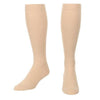What is Diabetic Retinopathy?

Table Of Contents:
What is Diabetic Retinopathy?
Diabetic retinopathy is a common and potentially severe eye condition that affects individuals with diabetes. It occurs when high blood sugar levels damage the tiny vessels in the retina, the part of the eye responsible for processing light and sending visual signals to the brain. Over time, this damage can lead to vision problems, making it crucial for individuals with diabetes to understand the risks, symptoms, and treatment options associated with diabetic retinopathy.
Causes and Risk Factors of Diabetic Retinopathy
The primary cause of diabetic retinopathy is prolonged high blood sugar levels, which damage the delicate blood vessels in the retina. However, several additional risk factors can contribute to the development and progression of this eye condition, including:
- Uncontrolled diabetes: Poor blood sugar management over an extended period.
- High blood pressure (hypertension): Increases the strain on blood vessels, including those in the eyes.
- High cholesterol levels Can contribute to blockages and reduced blood flow in the retinal blood vessels.
- Pregnancy: Hormonal changes and increased stress on the body during pregnancy can exacerbate diabetic complications.
- Long duration of diabetes: The longer someone has diabetes, the greater the risk of developing diabetic retinopathy.
Symptoms and Early Detection
In its early stages, diabetic retinopathy often presents no obvious symptoms, making regular eye exams critical for early detection. As the condition progresses, individuals may notice symptoms such as:
- Blurred vision
- Floaters (small dark shapes floating in the field of vision)
- Dark spots in the vision
- Impaired color vision
- Difficulty seeing at night
Early diagnosis and intervention are crucial to preventing further damage and maintaining vision. For those with diabetes, annual eye screenings are essential to monitor any changes in eye health.
Treatment and Management of Diabetic Retinopathy
While there is no cure for diabetic retinopathy, several treatment options can help manage the condition and prevent further vision loss. The specific treatment approach depends on the stage and severity of the disease. Key treatments include:
- Laser Therapy: Photocoagulation, a type of laser surgery, creates controlled burns on the retina to prevent the growth of abnormal blood vessels and reduce retinal swelling.
- Eye Injections: Medications, such as anti-VEGF (Vascular Endothelial Growth Factor) drugs or steroids, can be injected directly into the eye. These injections help reduce inflammation, prevent the growth of abnormal blood vessels, and improve visual outcomes. Common anti-VEGF drugs include:
- Aflibercept (EyeleaTM)
- Bevacizumab (Avastin)
- Ranibizumab (LucentisTM)
- Vitrectomy: In cases of advanced proliferative diabetic retinopathy, a surgical procedure known as a vitrectomy may be required. This procedure involves removing scar tissue, blood, or fluid from the eye and some of the vitreous gel to improve vision and prevent retinal detachment.
How to Prevent Diabetic Retinopathy
Preventing or delaying the onset of diabetic retinopathy starts with effective diabetes management. Individuals can significantly reduce their risk by controlling blood sugar, blood pressure, and cholesterol levels. Here are essential prevention tips:
- Monitor blood sugar levels: Keep blood glucose levels within the target range your healthcare provider recommends.
- Control blood pressure and cholesterol: Work with your doctor to manage these critical health metrics.
- Maintain a healthy diet: Focus on a balanced diet rich in fruits, vegetables, whole grains, and lean proteins.
- Engage in regular physical activity: Exercise helps regulate blood sugar and promotes overall cardiovascular health.
- Quit smoking: Smoking increases the risk of diabetic complications, including retinopathy.
- Schedule regular eye exams: Annual or more frequent eye screenings are essential for early detection and treatment.
How is Diabetic Retinopathy Treated?
The course of treatment for diabetic retinopathy depends on how far the disease has progressed. In the early stages, managing blood sugar levels may be sufficient to slow its progression. As the disease advances, more targeted treatments, such as laser surgery or injections, may be required to prevent further vision loss. Maintaining consistent medical consultations with an eye specialist can help determine each individual's best course of action.
Conclusion
Diabetic retinopathy is a significant concern for individuals with diabetes, but early detection and effective management can help prevent severe vision loss. By understanding the causes, recognizing the symptoms, and exploring available treatment options, individuals with diabetes can take proactive steps to preserve their vision and maintain eye health. Regular eye exams, proper diabetes care, and a healthy lifestyle are crucial to reducing the impact of diabetic retinopathy.
Best Sellers
-
Men's Cotton Diabetic Crew Socks (6 Pair)
![]()
- Regular price
- $39.99
- Sale price
- $39.99
- Regular price
-
$79.95 - Unit price
- per
Sold out





-
Men's Ultra-Soft Upper Calf Diabetic Socks (4 Pair)
![]()
- Regular price
- from $39.99
- Sale price
- from $39.99
- Regular price
-
$79.95 - Unit price
- per
Sold out


-
Men's Cotton Diabetic Ankle Socks (6 Pair)
![]()
- Regular price
- $39.99
- Sale price
- $39.99
- Regular price
-
$69.95 - Unit price
- per
Sold out


-
Women's Cotton Diabetic Crew Socks (6 Pair)
![]()
- Regular price
- $39.99
- Sale price
- $39.99
- Regular price
-
$79.95 - Unit price
- per
Sold out




-
Women's Cotton Diabetic Ankle Socks (6 Pair)
![]()
- Regular price
- $39.99
- Sale price
- $39.99
- Regular price
-
$79.95 - Unit price
- per
Sold out


-
Men's Over The Calf Compression Stocking Socks (1 Pair)
![]()
- Regular price
- from $19.99
- Sale price
- from $19.99
- Regular price
-
$31.95 - Unit price
- per
Sold out





-
Women's Ultra-Soft Upper Calf Diabetic Socks (4 Pair)
![]()
- Regular price
- from $39.99
- Sale price
- from $39.99
- Regular price
-
$79.95 - Unit price
- per
Sold out


-
DSC Hemp Cream For Neuropathy Aches & Nerve Pain (Peppermint)
![DSC Rub]()
- Regular price
- from $39.99
- Sale price
- from $39.99
- Regular price
-
$59.95 - Unit price
- per
Sold out









